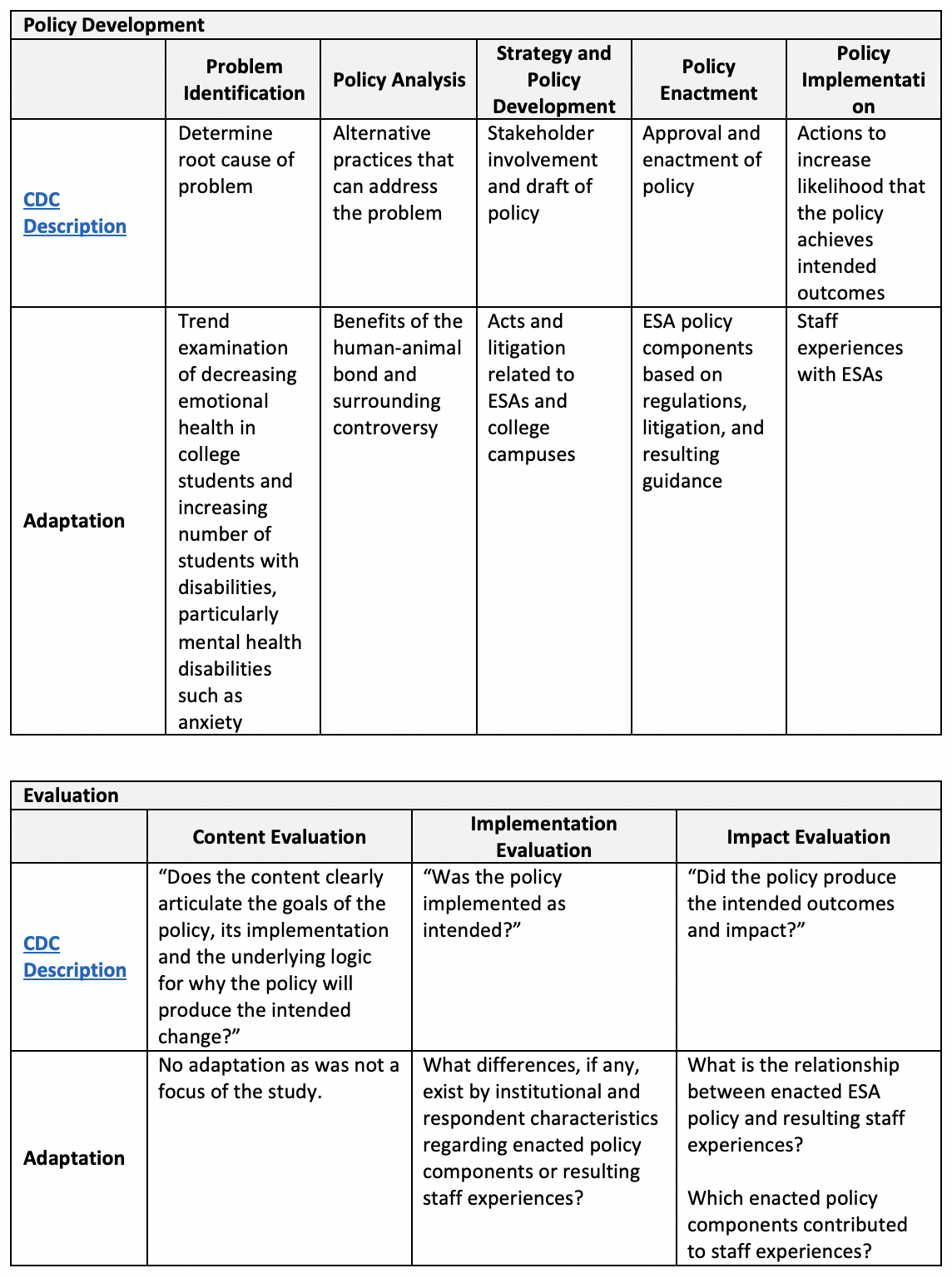Hi, I’m Christy King an internal evaluator on PA’s state GEAR UP (Gaining Early Awareness and Readiness for Undergraduate Programs) grant and a doctoral candidate at Immaculata University.
For my dissertation, I investigated the implementation of emotional support animal policies on college campuses and the resulting staff experiences. After an extensive search for a theoretical framework or lens to view the study through, I stumbled across the Centers for Disease Control and Prevention’s (CDC) policy process and policy evaluation which when combined result in this figure as shown in CDC’s Overview of Policy Evaluation.

The top row structured my literature review and the bottom row provided a structure for the research questions as shown in the tables below.

Lesson Learned:
Adapting a theoretical framework to view a study or evaluation through can provide the needed structure to be successful. Without adapting this framework to the topic area, I’m not sure how I would have structured my dissertation. After my defense, the committee members all remarked that when I first discussed my dissertation topic, they were skeptical as to how I might approach the topic. However, the CDC’s policy process, policy evaluation, and the resulting figure, allowed me to structure and focus my dissertation successfully.
Rad Resources:
For more information about the CDC’s policy evaluation and the included figure, check out these briefs:
- Brief 1: Overview of Policy Evaluation
- Brief 2: Planning for Policy Evaluation
- Brief 3: Evaluating Policy Content
- Brief 4: Evaluating Policy Implementation
- Brief 5: Evaluating Policy Impact
Do you have questions, concerns, kudos, or content to extend this aea365 contribution? Please add them in the comments section for this post on the aea365 webpage so that we may enrich our community of practice. Would you like to submit an aea365 Tip? Please send a note of interest to aea365@eval.org. aea365 is sponsored by the American Evaluation Association and provides a Tip-a-Day by and for evaluators. The views and opinions expressed on the AEA365 blog are solely those of the original authors and other contributors. These views and opinions do not necessarily represent those of the American Evaluation Association, and/or any/all contributors to this site.

Hello Christy,
Your AEA365 post was insightful. I learned much.
Your post reminded me of my study of policy, (many years ago). I was influenced by an analytical framework of policy instruments developed by McDonnell & Elmore, (1987). They built a matrix of four policy instruments (mandates, inducements, capacity building and system change), primary elements and expected effects. I thought you find this of interest. Forgive me if you have already seen it…
Thanks Tom for sharing this. I had not seen it.
Thanks for this post. When I was working in another division at CDC focused on smoking prevention, we adapted these briefs to develop a policy evaluation guide tailored to one particular type of policy, those that limit sales of tobacco to those 21 years of age and older. This resource integrating content, implementation and outcome evaluations, by various evaluation domains, can be found here: https://www.cdc.gov/tobacco/stateandcommunity/tobacco_control_programs/surveillance_evaluation/tobacco-21-policy-evaluation/pdfs/T21-policy-evaluation-guide-508.pdf
Thanks for sharing Nicole!